The longstanding tension between the US and Spain over the latter's actions in Cuba boiled over after the battleship Maine was destroyed in Havana harbor. There had long been at least some pressure for war from both sides, and despite the best efforts of President McKinley and the business community, who feared another recession, this pressure became irresistible.
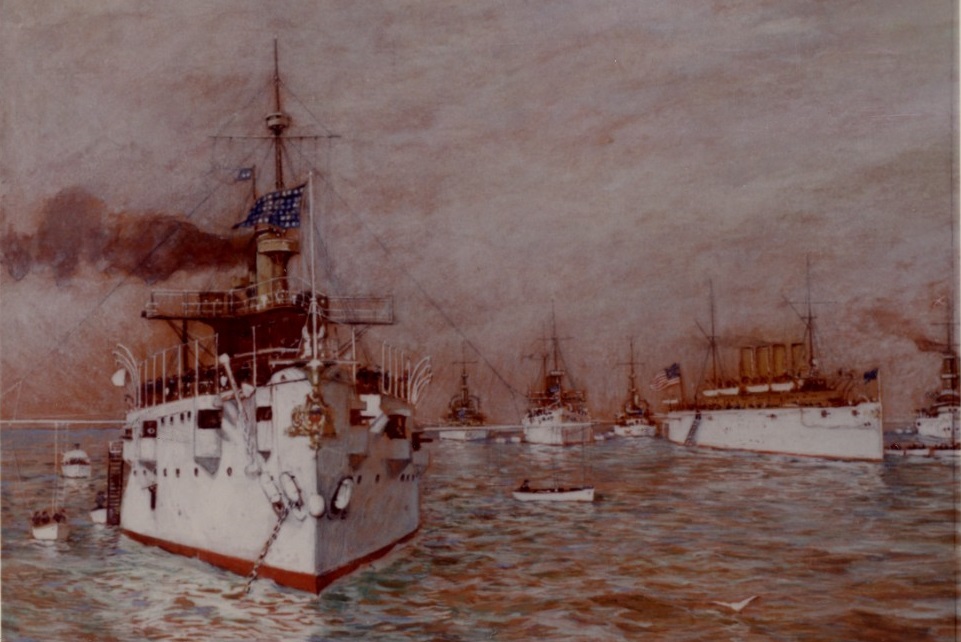
New York, Indiana, Texas, Massachusetts, Columbia and Iowa
On paper, the two sides were reasonably evenly matched. The United States had the edge in battleships, with Texas, Indiana, Massachusetts, Oregon and Iowa to the lone Spanish vessel of that type, Pelayo, a ship roughly contemporary to Texas and much inferior to the American pre-dreadnoughts. The balance in cruisers was more even. The Spanish had seven armored cruisers to a pair of American ships, but the USN had the edge in modern protected cruisers, 14 to 3. The Spanish also had a number of older cruisers, although they were of negligible combat value, and a significant edge in terms of torpedo craft. The USN countered with a half-dozen monitors, vessels suitable primarily for coastal waters but powerfully armed. However, the apparent balance of forces was deceiving. The USN was a modern, professional force with high standards of training and readiness. The Armada Espanola, on the other hand, had serious issues on both fronts. Ships were undermanned and their crews were largely green, while many ships, most notably Pelayo and three of their armored cruisers, were unable to go to sea at the beginning of the war. Some of these ships were made ready for sea as the war went on, but others were still being completed, and there was no practical hope of bringing them into service in time to be of use. Even the operational ships had serious deficiencies. Some were slowed by engineering problems or foul bottoms, while others were crippled by defective guns. Despite this, Admiral Pascual Cervera received orders on April 22nd to take the bulk of the Spanish fleet to Cuba to resist the just-announced American blockade.
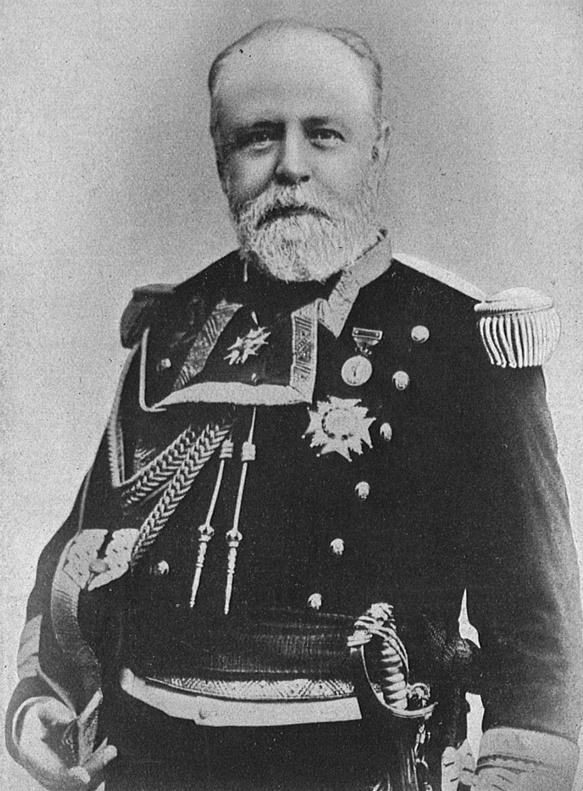
Pascual Cervera
The US prepared much more vigorously for the threat of war than did the Spanish. Starting in February, all available ships were made ready for sea, and the fleets were concentrated for war. Ships in reserve were reactivated, and merchant ships were converted to auxiliary cruisers for patrol duty by fitting guns. Unable to crew these ships out of its own manpower pool, the Navy turned to the state naval militias. These men, many of them professionals in civilian life, served with distinction during the war.
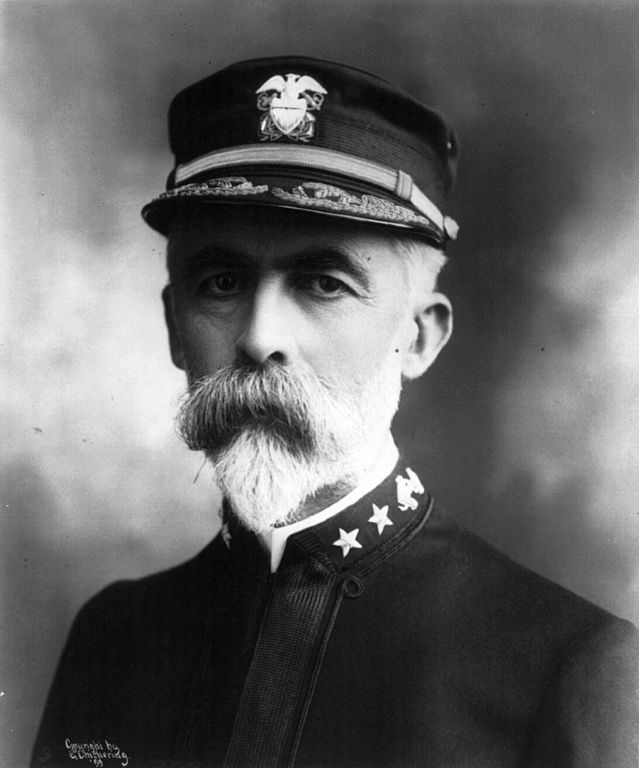
William Sampson
For some reason, there was essentially no awareness of the fraught state of the Spanish Navy within the US, and when Cervera sortied from the Cape Verde Islands, public hysteria about the possibility of a raid on the East Coast swiftly followed. The fleet that had amassed at Key West under Rear Admiral William Sampson, known as the North Atlantic Squadron, was divided, with about a third of the ships being handed over to Commodore Winfield Schley to form the Flying Squadron, based at Hampton Roads. To help reassure the public, a number of Civil War-era Monitors, many armed with smoothbore guns, were reactivated. Their military effectiveness was negligible, but fortunately, neither they nor the US's coastal defenses would have to be put to the test. Sampson would have the responsibility for blockading Cuba and opposing any movement by Cervera's fleet into the Caribbean. Because of the limited size of his force, he focused on the ports of Havana and Cienfuegos in the western half of the island, capturing a number of Spanish merchant ships before war was formally declared on April 25th. Two days later, Matanzas was bombarded by the fleet. This was probably an attempt to give the American sailors target practice with an enemy who would shoot back, and the results on both sides were negligible. The blockade proved difficult to maintain, even though the main base at Key West was only 80 miles from Havana, as ships often had to retire to take on more coal. Sampson eventually tired of this, and on May 4th decided to take his fleet east to the Windward Passage, in hopes of intercepting Cervera. We'll pick up his attempt to intercept the Spanish later, and look at a few actions around Cuba that occurred in the meantime.
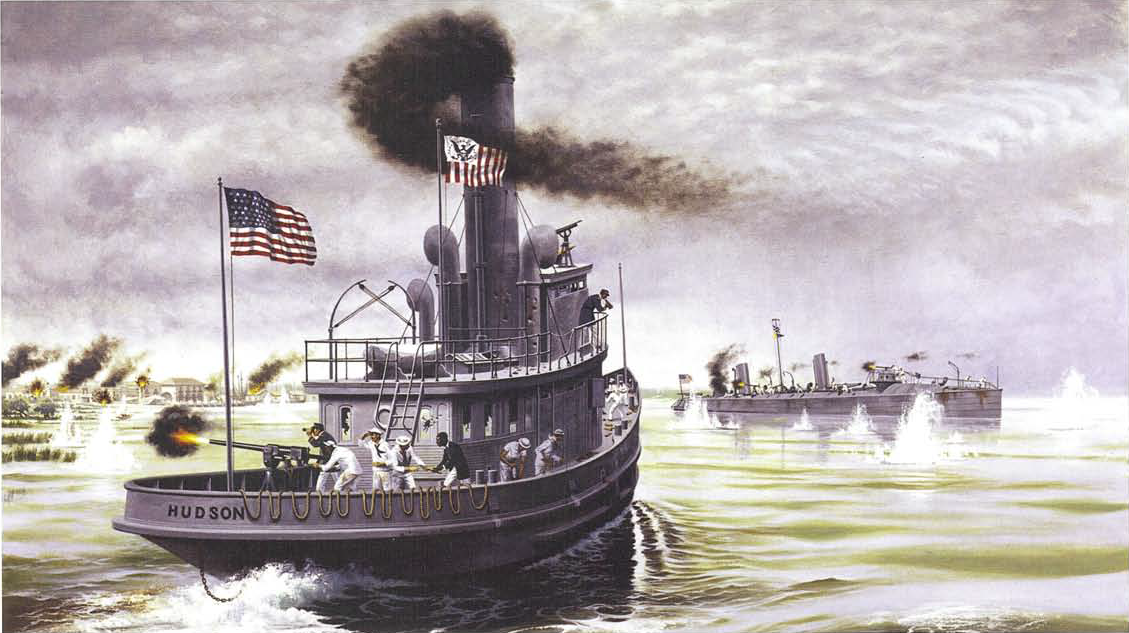
Hudson and Winslow
May 11th saw the first major naval engagement off Cuba. The torpedo boat Winslow, the Revenue Cutter1 Hudson and the gunboat Wilmington entered the Bay of Cardenas to destroy the trio of Spanish gunboats operating there.2 A small, grey ship was sighted tied up at a wharf, and Winslow was dispatched to investigate. As she closed, she ran into a field of buoys that the Spanish had planted to mark the range for a battery of guns ashore, and the gunboat at the wharf opened fire, followed by the shore battery. The first hit on Winslow destroyed both her main and secondary steering gear, forcing her crew to use the engines to keep her 1-pounder bow guns in a position to return fire. Another hit destroyed one of the engines, leaving her barely able to evade Spanish fire. Wilmington sank the gunboat and attempted to silence the Spanish guns, although this was made difficult because they used the relatively new smokeless powder. Hudson's captain brought her alongside the disabled torpedo boat, and passed a tow rope. It parted, and a second had to be rigged, even as Spanish shells continued to fall around the two ships. As it was readied, a shell struck Winslow amidships, killing the executive officer, Ensign Worth Bagley and four men from his working party. Ultimately, Bagley would be the only commissioned officer of the Navy killed during the war. Hudson finally towed Winslow out of range an hour and 20 minutes after the battle began. Besides the five dead, Winslow suffered five wounded, including her captain, John Bernadou. Hudson, amazingly, was undamaged, and in recognition of the heroism of her crew, Congress authorized a special medal for them.3
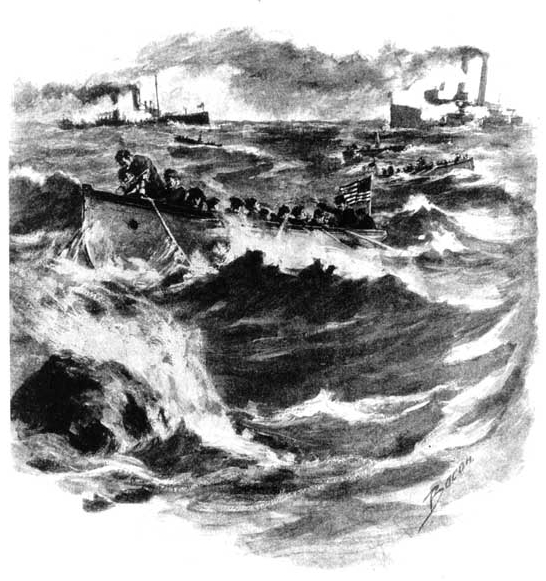
The raid on Cinefuegos
That same day, the USN launched a raid on the south coast of Cuba in an attempt to cut the undersea cables that provided communication for the island. At Cienfuegos, cables from Havana and Santiago came ashore, and the cruiser Marblehead, the gunboat Nashville and the cutter Windom were dispatched to cut them. 55 volunteers under the command of Cameron Winslow4 took boats in close to shore, planning to grapple the cables, haul them up and remove sections long enough to frustrate repair.5 Unfortunately, the Spanish noticed them and, despite heavy covering fire from the ships, drove the party off after only two of the cables were severed after three hours of effort. Apparently, these were redundant, and Spanish communications continued unhindered. Two sailors were killed and 15 wounded, and every enlisted man on the expedition was awarded the Medal of Honor.6
Before we can return to Sampson and Cervera, our story takes us first to the Far East, where the most famous naval battle of the war had already been fought. We'll discuss it next time.
1 The Revenue Cutter Service would merge with the United States Life-Saving Service in 1915 to form the Coast Guard. ⇑
2 Wiki claims that there were two previous clashes between these gunboats and units of the blockading squadron. I'm pretty sure that the first one is essentially mythical. The Secretary of the Navy's report on the blockade specifically says that the first time American ships came under fire was on the 27th and my other main source makes no mention of it. DANFS on Foote says that on the 23rd "she penetrated the harbor to scout shipping, and was fired upon. Six days later, she herself bombarded Morro Island." The later bombardment pretty much rules out serious damage on the 23rd or 25th. I suspect that Foote was simply supposed to scout, and left when the Spanish shot at her. The second one is somewhat more puzzling. DANFS and the SecNav are both silent on it, while The Downfall of Spain, a contemporary book I've been using, describes it entirely differently from the Wiki article. The Wiki article is essentially unsourced, and strikes me as implausible given the balance of firepower. ⇑
3 At the time, the Revenue Cutter Service was not eligible for the Medal of Honor, which was awarded to three men from Winslow. ⇑
4 Cameron Winslow was the first cousin of John Winslow, who the torpedo boat was named after. ⇑
5 These cables were almost 2" thick and heavily armored, so both cutting and repair were non-trivial. ⇑
6 Winslow was not, as the Navy did not authorize officers to receive it at the time. It's also worth pointing out that at the time, the MoH was the only decoration available for valor. The vast majority of awards before WWI (and possibly during WWI) are for actions that would merit lesser medals today. ⇑

Comments
Can you comment on who on the Spanish side wanted a war, and why? People do occasionally rush into disastrous wars that they are in no way prepared for, but this example seems particularly egregious in hindsight.
Some of it was from the Spanish Cubans, who I think suspected the US of meddling in their affairs and wanted that put to bed. There were also the run-of-the-mill nationalists, who thought that the flower of Spanish manhood could defeat the scum who crewed the American navy (close paraphrase of something I read doing research for this post). Keep in mind that this was only 15 years after the beginning of the "New Navy", and before that, the USN had been legitimately terrible.
And keep in mind that the role of training and new equipment was systematically underrated during this era. We saw this in the Sino-Japanese War, the Spanish-American War, and we're going to see it in the Russo-Japanese War. To a large extent, we've since learned the lesson so well it's hard to remember what it was like when we hadn't.
I mean, OK, but in 1898, when was the last time the Spanish won a war against a remotely peer power? Heck, it had just taken them three years to put down a Cuban revolt. They lost a war against the Dominican Republic. They ~~can't~~ shouldn't have been thinking they were a Great Power at this point. And wow, five against one in battleships, presumably the arm of decision in a naval war? Sheesh. That's some quality nationalism right there.
It's not quite as stupid as it looks at first glance. Remember, this is an era when armored cruisers were the size of battleships and expected to stand in the line of battle. So you're now at 6 Spanish capital ships vs 7 American, or 6 if Oregon stays on the west coast (which the Spanish expected her to).
Another potential factor is the expectations placed on Spanish torpedo craft. Spain had a fairly large torpedo force, and the limitations on such craft at sea weren't appreciated. This is the era when the Jeune Ecole is saying that the battleship is obsolete, and some people are listening to them.